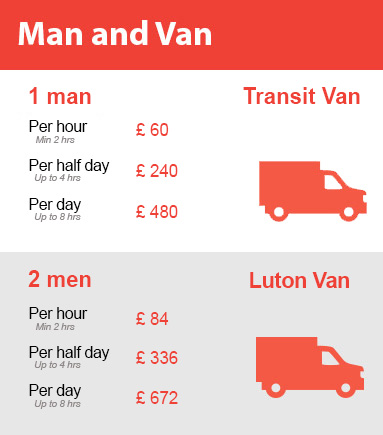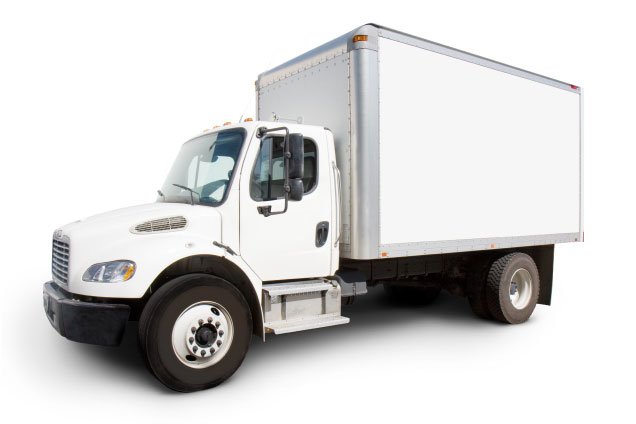Elevate Your Solo Lifting Game: Master Safe Heavy Object Handling
Posted on 22/06/2025
Elevate Your Solo Lifting Game: Master Safe Heavy Object Handling
Are you often faced with the challenge of moving heavy objects all by yourself? Whether it's in the workplace, during a house move, or embarking on a DIY project, lifting and handling bulky items alone demands more than just brute strength. It requires technique, strategy, and the right mindset. In this comprehensive guide, we'll unveil the secrets to elevating your solo lifting game and mastering the art of safe heavy object handling.
Why Mastering Heavy Object Handling Alone Matters
Safe and efficient solo heavy lifting isn't just about getting the job done--it's about protecting yourself from serious injuries, boosting your productivity, and gaining confidence in your capabilities. Improper lifting techniques are a leading cause of back injuries, strains, and sprains both at home and in the workplace. By investing time into learning safe handling methods, you protect your health and ensure every task is carried out smoothly.
The Cost of Unsafe Lifting
- Physical injuries: Herniated disks, muscle tears, joint sprains
- Lost time: Days or weeks spent recovering from preventable mistakes
- Added expenses: Medical bills and even replacement of damaged goods
- Productivity loss: Struggling to complete tasks due to pain or limited mobility
Don't let poor lifting habits jeopardize your well-being. Let's explore how to upgrade your lifting skills!

Understanding Solo Lifting: Key Safety Principles
Mastering safe heavy object handling starts with understanding your body's mechanics and the principles of physics as they apply to lifting. Solo lifting often means you are your only support, so it's crucial to be prepared mentally and physically.
Assess Before You Attempt
- Check the object's weight and shape--is it too heavy to lift alone?
- Test for stability: awkward or shifting loads are harder to control.
- Clear your path: eliminate any obstacles between the pickup and destination point.
- Identify your route: are there stairs, tight corners, or slippery areas to navigate?
Know the Limits--When to Get Help
One of the most critical skills in solo lifting is knowing your boundaries. Even with the best techniques, some items are simply too heavy or unwieldy for single-person lifting.
- If you can't safely grasp, lift, and maneuver the item, ask for help or use mechanical aids.
- Many workplace safety guidelines recommend a single person not lift more than 50 pounds without assistance.
Prepping Yourself for Safe Lifting
1. Focus on Your Fitness
Lifting heavy objects routinely demands strong core muscles, flexible joints, and general fitness. Regular exercises such as squats, planks, and yoga can reinforce your body, making it more resilient against strains during solo heavy lifting.
2. Wear Proper Clothing and Footwear
- No loose or baggy clothing--it might snag or restrict movement.
- Wear closed-toe, non-slip shoes with good support.
- Consider gloves for improved grip and protection against sharp edges.
3. Warm-Up
Just like athletes, you should prepare your body for exertion. Spend 5-10 minutes stretching your legs, arms, and back to reduce the risk of pulls or tears.
Best Solo Lifting Techniques for Safe Heavy Object Handling
Let's break down the top techniques experts use to master safe heavy lifting solo:
1. The Classic Lift: Proper Form is Key
- Stand close to the object with your feet shoulder-width apart.
- Bend your knees--not your waist--keeping your back straight and chest up.
- Grip the load firmly. If possible, keep your hands as far apart as edges allow for greater stability.
- Engage your core muscles.
- Rise steadily by pushing up with your legs, not your back.
- Hold the object close to your torso as you stand.
Never twist or turn your body while lifting or carrying. If a change in direction is needed, move your feet--not your torso.
2. The Slide-and-Lift Method
- For objects resting on a flat surface, gently slide the item to the edge to avoid unnecessary lifting distance.
- Lift only after the object is positioned to minimize reaching and awkward angles.
3. The Pivot Technique
- If you need to change direction, pivot with your feet instead of twisting your back. This technique helps avoid dangerous torsional stress on your spine.
4. Team Up with Tools
Even when working alone, you have allies! Using lifting aids and equipment can dramatically reduce strain and risk.
- Hand trucks/dollies: Perfect for wheeled transport across distances.
- Furniture sliders: Let you safely move heavy items across floors without lifting at all.
- Lift straps and harnesses: Distribute weight evenly across your body.
- Pry bars and levers: Help raise or reposition incredibly heavy objects with less effort.
Smart Strategies for Handling Bulky or Unwieldy Items
Break It Down If Possible
- Remove drawers, shelves, detachable parts, or contents before attempting to lift.
- Disassemble furniture when feasible to lighten your load and make objects more manageable.
Redistribute the Load
- Shift items within boxes or bins to create a more balanced weight.
- Aim for an even weight distribution to make the lift safer and smoother.
Planning Is Half the Job
- Visualize your path, including any obstacles or tight spaces.
- Plan rest spots if the destination is a distance away.
- Set down the load if you feel fatigued--don't push through exhaustion.
Advanced Techniques: Take Your Solo Lifting Game to the Next Level
Use Leverage and Physics
Understanding leverage can make even the heaviest items seem lighter.
- Use levers (like a sturdy rod or plank) to tilt heavy furniture, so you do less work getting lifting aids under it.
- Roll -- don't drag -- using cylindrical objects like pipes for smooth floors.
Harness Momentum Safely
A careful "rock and lift" motion can help get items over thresholds or up onto platforms. Rock the object back and forth to gain slight momentum, then lift during the upward movement. But never jerk or heave abruptly--slow and steady wins the race!
Building Your Skillset
- Take basic first-aid and manual handling courses if you frequently lift alone.
- Review ergonomic lifting videos online to visualize correct form.
- Practice with lighter loads to master form before attempting heavier objects.
Common Pitfalls to Avoid in Solo Heavy Lifting
- Rushing: Slow down to maintain control and balance.
- Lifting with your back: Always engage your legs and keep your spine upright.
- Twisting as you lift: Always step and pivot--never rotate your upper body.
- Holding the object away from the body: The farther the load from your core, the greater the strain.
- Ignoring pain signals: Stop immediately if you feel pain and seek support if needed.
Gear Up: Equipment to Boost Safe Heavy Object Handling
Personal Protective Equipment (PPE)
- Gloves: For grip and hand protection.
- Back braces: To support posture and reduce strain.
- Steel-toed boots: Shield feet in case something is dropped.
Mechanical and Manual Aids
- Lifting straps: Make carrying appliances or boxes easier by distributing weight down your arms and torso.
- Hand trucks: Essential for transporting multiple boxes, furniture, or appliances over long distances solo.
- Sliders and gliders: Move large items on carpet or hardwood effortlessly.
Preventative Practices for Long-Term Solo Lifting Success
Build Strength and Flexibility
- Engage in regular strength training, focusing on legs, back, shoulders, and core.
- Practice yoga or stretching for flexibility--it helps prevent strains.
Maintain Your Equipment
- Check all lifting aids before use for damage or wear.
- Replace worn gloves, straps, and sliders regularly.
Stay Hydrated and Take Breaks
- Muscle fatigue and dehydration compromise your form and focus.
- Drink water throughout strenuous tasks and take breaks as needed.
Handling Heavy Objects Alone: Myths vs. Facts
- Myth: "Lifting with your legs alone is enough."
Fact: Good form requires an engaged, braced core and straight spine in addition to leg strength. - Myth: "If you're strong, you don't need help."
Fact: Technique, planning, and tools are often more important than raw strength. - Myth: "Twisting while lifting saves time."
Fact: Twisting multiplies injury risk--always pivot your feet instead. - Myth: "It's okay to power through pain."
Fact: Pain is your body's warning. Stop and reassess if you feel discomfort.
When NOT to Attempt Solo Heavy Lifting
Some circumstances should always rule out solo lifting:
- Loads heavier than you can reasonably manage or awkwardly shaped items that lack stable handholds.
- Slippery, wet, or uneven terrain between pickup and destination.
- Pre-existing back injuries, pain, or limited mobility on the day of the task.
- Fatigue, distraction, or rushed timelines--these increase the risk of mishaps.
In these situations, prioritize safety by asking for help or using advanced lifting equipment.

Frequently Asked Questions About Mastering Safe Heavy Object Handling Alone
- What's the maximum weight I should lift alone?
Experts generally recommend not exceeding 50 pounds for solo lifts unless you are trained and using proper aids. Always err on the side of caution and listen to your body. - Is it safe to use lifting belts?
Lifting belts can help support your lower back but should not be a substitute for correct form and proper technique. Always use them as an adjunct, not as primary protection. - What if I feel pain during a lift?
Stop immediately. Set the item down carefully and reassess. Persistent pain means it's time to avoid further lifting and possibly consult a medical professional. - Do I need training to handle heavy objects alone?
Formal training in manual handling is highly recommended, especially for frequent lifters. Many short online courses are available to reinforce correct methods.
Conclusion: Empower Yourself with Safe Heavy Lifting Skills
By learning to master safe heavy object handling alone, you not only protect your body but also elevate your confidence, efficiency, and independence. With a foundation in proper technique, the right equipment, and a strategic approach, anyone can take their solo lifting game to new heights while minimizing risks.
Remember: Smart lifting is safe lifting. Every heavy object you move solo is a chance to reinforce good habits and set an example for others. So plan ahead, gear up, and lift with confidence!
Ready to elevate your solo lifting game and master safe heavy object handling? Start practicing these techniques today--and enjoy the peace of mind that comes from a safer, stronger approach to every heavy task.





